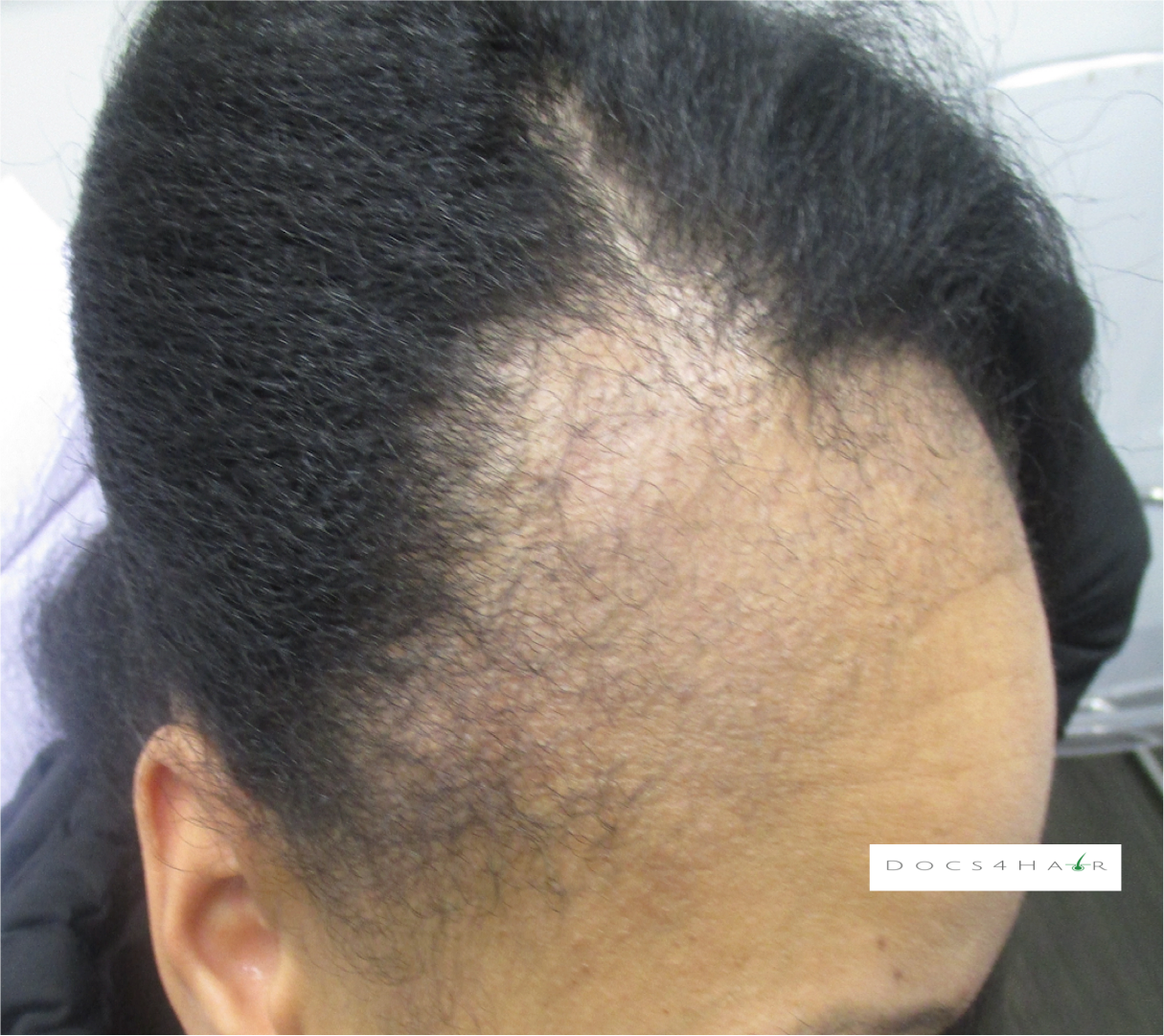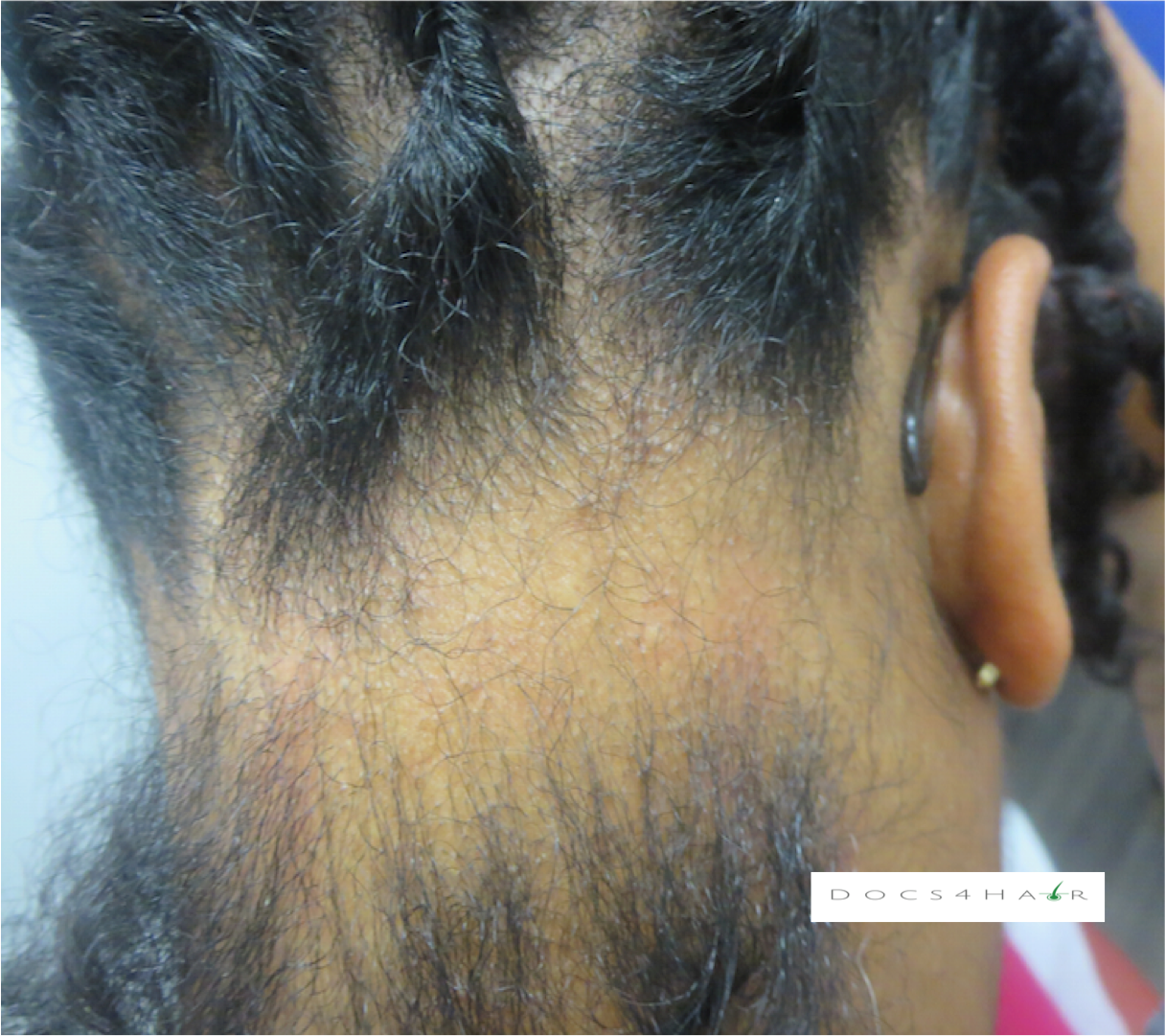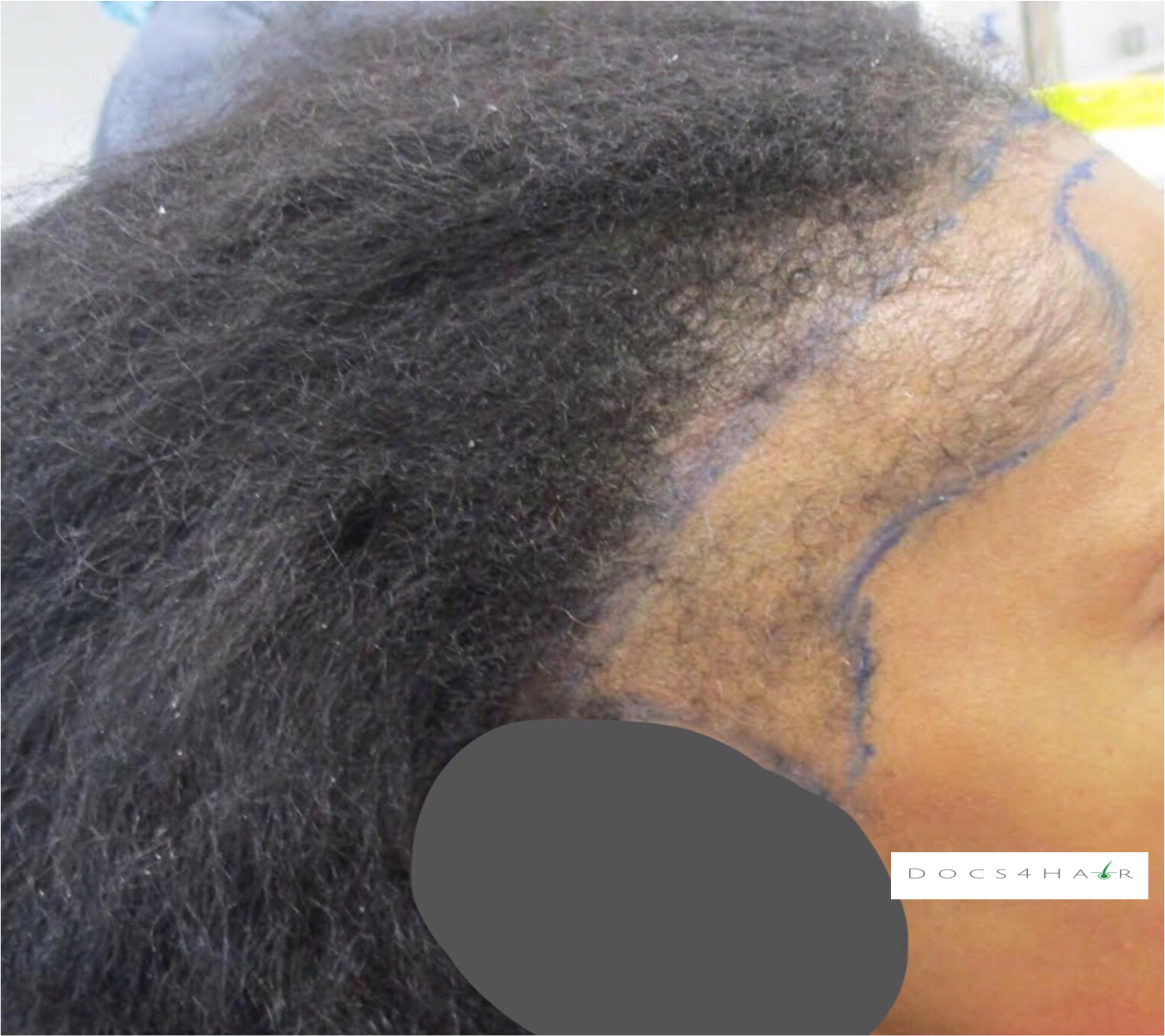Traction alopecia
Clinical Presentation (2)
Traction alopecia (TA) was first described in 1907 in women from Greenland (1) typically starts in childhood and increases prevalence with age. In early TA, the condition is non-scarring and reversible. However, with continued tension, the hair loss can become scarring and permanent. Early TA presents with bumps, "puss" bumps, mild thinning and hair breakage. In late stage TA, more severe thinning and eventually scarred balding of the scalp is seen. It most commonly occurs along the hairline (frontal and temples) but can affect any area of the scalp depending on hairstyle . It can be associated with itching, pain and other sensations.
Epidemiology (2, 3, 4)
TA typically occurs in women of African descent. The prevalence is estimated to be as high as one in three in this population . However, it can affect any person (male or female) wearing prolonged tension hairstyles.
Causes (5)
TA is caused by excessive pulling forces, leading to mechanical damage of the hair follicles. The previously mentioned can lead to inflammation and scarring of the scalp. Risk factors of traction alopecia include:
Intrinsic properties of tightly coiled hair making it more susceptible to breakage
Prolonged tension styles (e.g., ponytails, extensions, Sikhism, ballerinas)
Repeated use of chemicals (e.g., relaxers)
Diagnosis (2)
TA is diagnosed via history, clinical scalp and hair exam, and dermoscopic evaluation. Rarely, scalp biopsies are performed to confirm the diagnosis.
Clinical Imitators (Differential Diagnosis) (2)
Early disease: Trichotillomania, triangular alopecia, alopecia areata
Late disease: Frontal fibrosing alopecia, central centrifugal cicatricial alopecia
Treatment Options (2, 6, 7)
Early TA: Reversible hair loss
Hair grooming:
Avoid potentially damaging hair care practices such as traction/ tension hairstyles (weaves, wigs, braids, extensions, ponytails, etc.), chemical relaxers, excessive heat, hair bleaching, and hardening gels and sprays. Also avoid combining styles that potentially damage the hair shaft (e.g. relaxers/ straightening) with tension hairstyles (e.g., braids, weaves, tight scarves) as this may increase the potential for hair loss.
Adopt a more "natural", loose, low manipulation hairstyle. There are many low risk hairstyling options for afro-textured hair.
Follow-up with a hair care professional who is well versed on safe hair care practices.
No hairstyle should produce pain during or after styling.
Scalp Pain = Damaged/ Dead Hair Follicles
Avoid all hairstyles that produces pain and immediately remove any hairstyle that causes pain or bumps.
Anti-Inflammatory: Steroids (topical/ injection), topical calcineurin inhibitors (tacrolimus and pimecrolimus)
Growth stimulants: Minoxidil (anagen phase promoter- topical) (8)
Hair Restoration: Platelet rich plasma (off label)
End stage TA: Irreversibly scarred areas of hair loss, despite treatment
Scalp camouflage: Scalp micro-pigmentation, hair fibers, color stick, and scalp prosthesis (e.g customized wigs)..
Docs4Hair also recommends a general holistic approach to hair loss.



